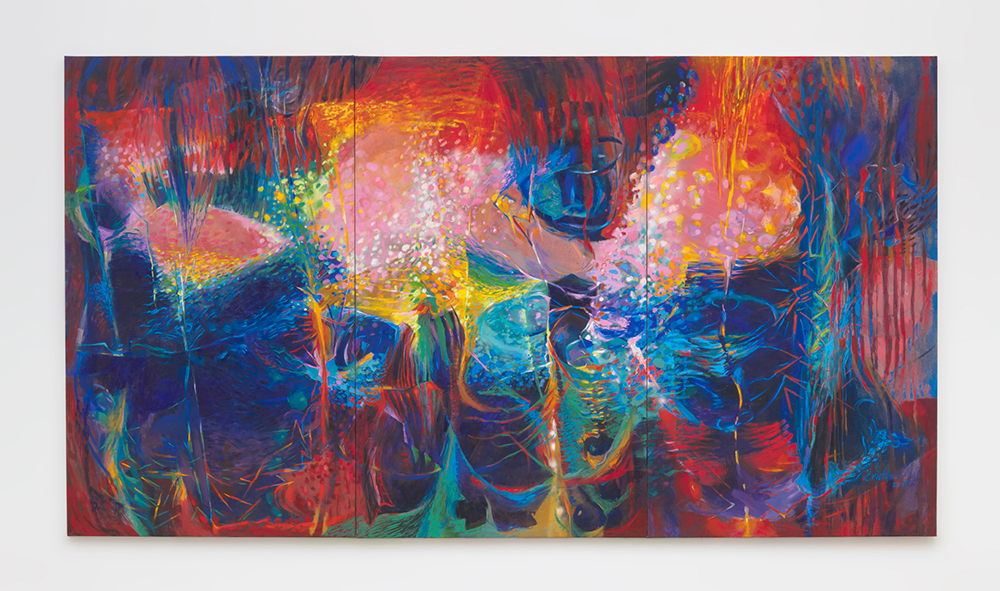With his first solo show in California, the Trinidadian painter Kenwyn Crichlow makes a memorable debut, displaying dynamic, reflective abstractions that engulf the viewer in a spectrum of sensations. Born in Trinidad and Tobago when it was still a British colony, Crichlow came of age after the Caribbean nation gained its independence in 1962. A grant to study art at Goldsmiths College in London in the 1970s marked a dramatic turning point for his practice, as the young painter was directly exposed to some of the great Modern masters for the first time. He was especially moved by Monet’s water lilies, and by the works of Rothko, with their intense emotive and immersive color fields.
Titled “Incandescence,” his new exhibition at Diane Rosenstein juxtaposes some of Crichlow’s works from the 1970s with paintings from the past two decades. While the early works are grounded in the daily life of his island nation, depicting figures in abstracted landscapes, the artist’s recent works are vividly abstract. Here, the artist’s washy textures transform into vigorous post-Expressionist swaths, dabs and brushstrokes, while his palette is distilled into brilliant jewel-like displays of primary and secondary colors that suggest tropical flora and hint at elemental forces: yellow and white for light, red and orange for fire, blue for sea or sky, green for vegetation. For all their abstraction, the works offer a surprising depth of field, like depictions of an imaginary space flecked with teasing glints of sensory experiences. Although informed by the landscape, the artist willfully avoids direct allusion. The resulting works are gloriously liminal, confronting viewers with a heady indeterminacy.

Kenwyn Crichlow, Light Dancing on the Borderline, 2019. Photo: Robert Wedemeyer. Courtesy of Diane Rosenstein Gallery.
Setting the tone for the show is Kissing the Horizon (2006–10), a dazzling horizontal triptych, in which five reddish bulb-like blobs along the base of the canvas seem to erupt into vertical yellow flames or crystals against a roiling red field, which is bedecked with coiling blue ribbons and a few leafy strokes of green. Its opposite in terms of color, Light Dancing on the Borderline (2019) presents twirling vertical yellow and white pillars against a teal blue expanse. But if one feels fiery and the other watery, both similarly orchestrate order from chaos, culling a sense of internal structure that seems almost musical at times, with flows of energy set off along a rhythmic armature of vertical elements.
Foreday–d’light at d’horizon (2023) depicts an effusion of gold specks amid streaks of canary, ochre and mustard. As with others of his works, these energy flows can be read as physical, biological or more ethereal—as if gazing beyond the surface of phenomenological experience to reveal the dynamism beneath. Spanning the entire color wheel, the striking horizontal triptych titled Blackened Earth: The Hope for Freedom (2022–23) offers fields of deep indigo illuminated with shimmering pink sprays, crimson streaks and brilliant yellow flares. The result is at once sumptuous and haunting, as if the artist is raising sputtering torches against the darkness of our own subconscious fears to reveal teeming life forces—creating a luminous portal between the external world of natural phenomena and the oceanic churnings of human emotion.


